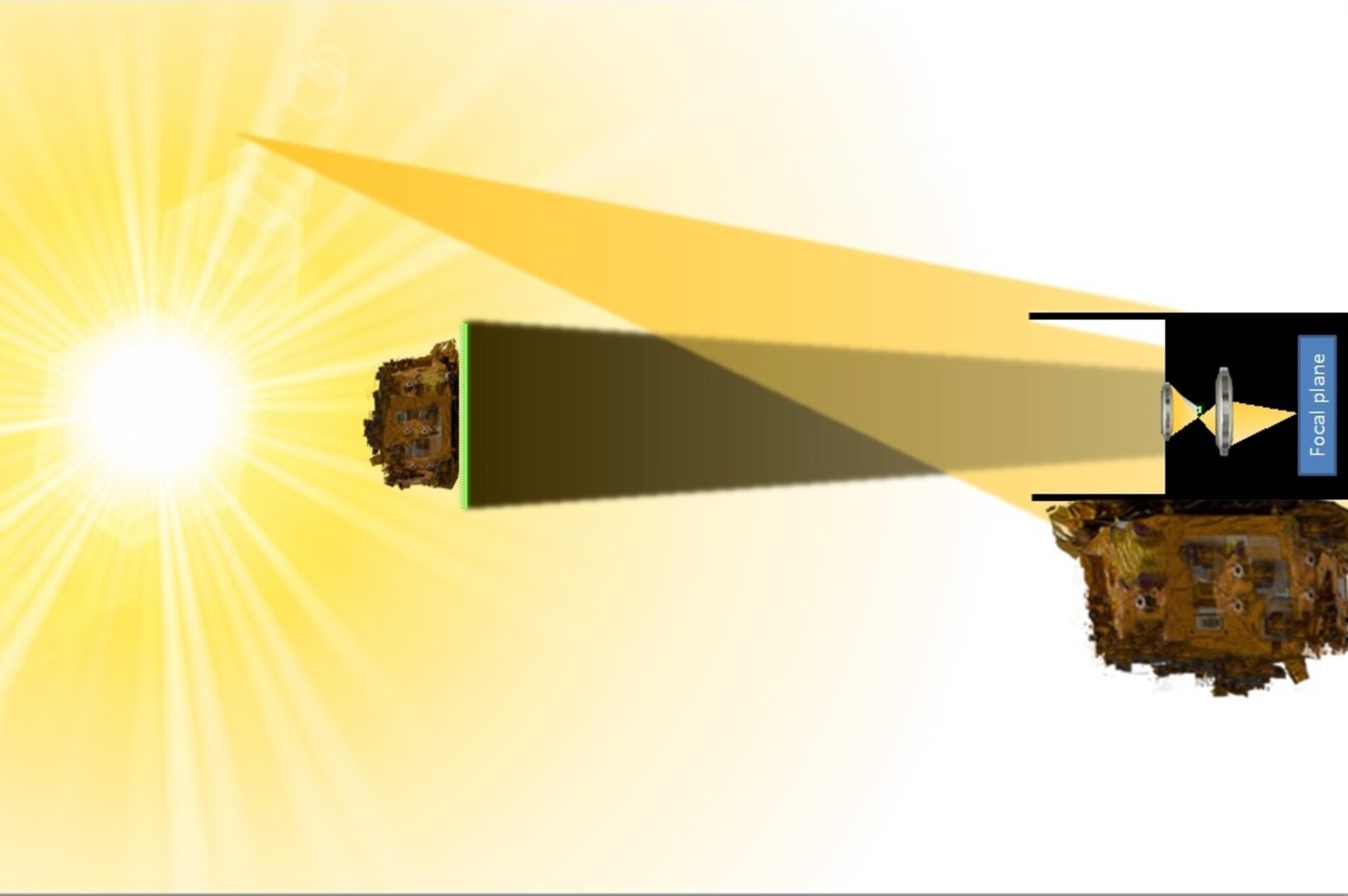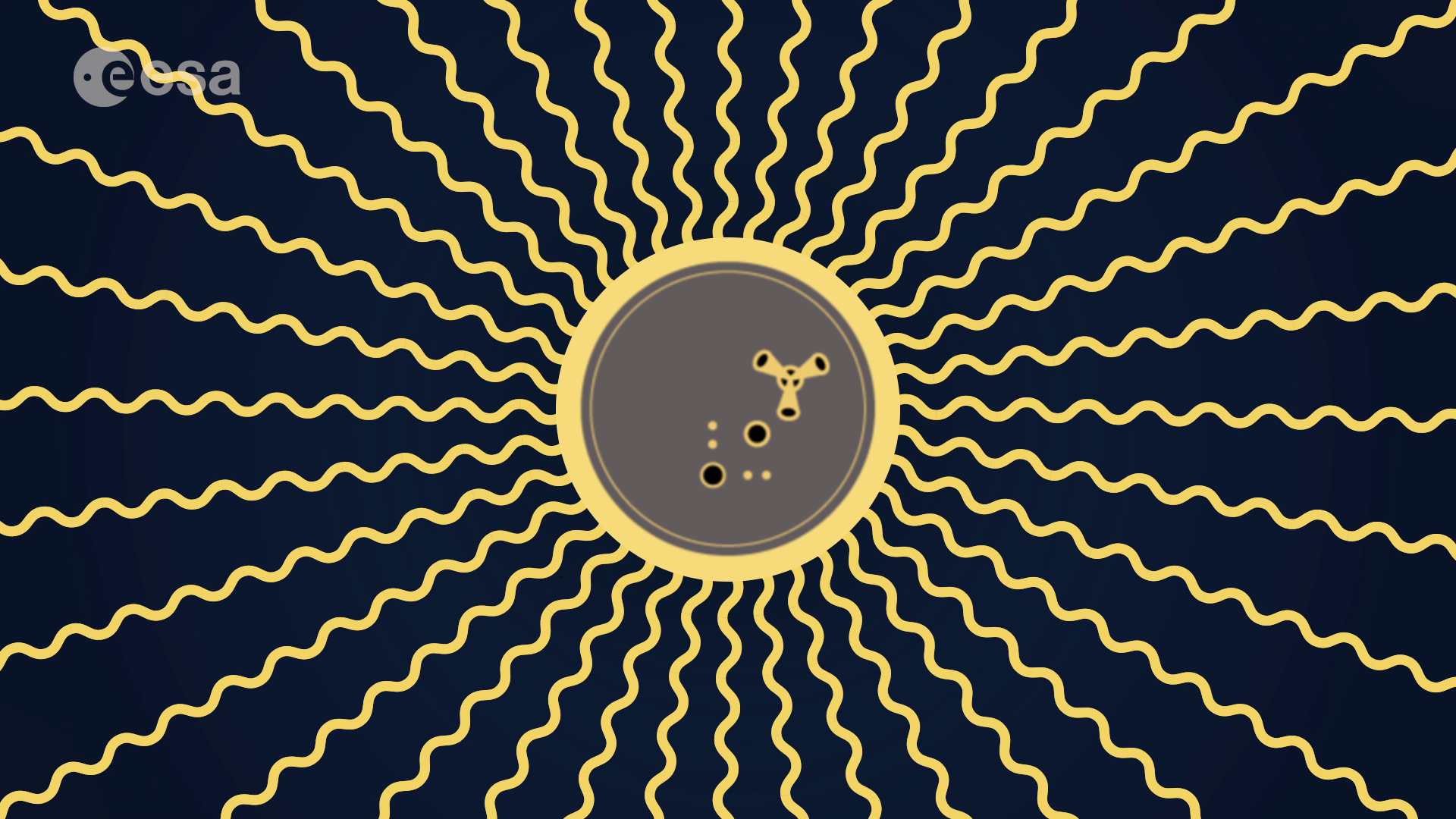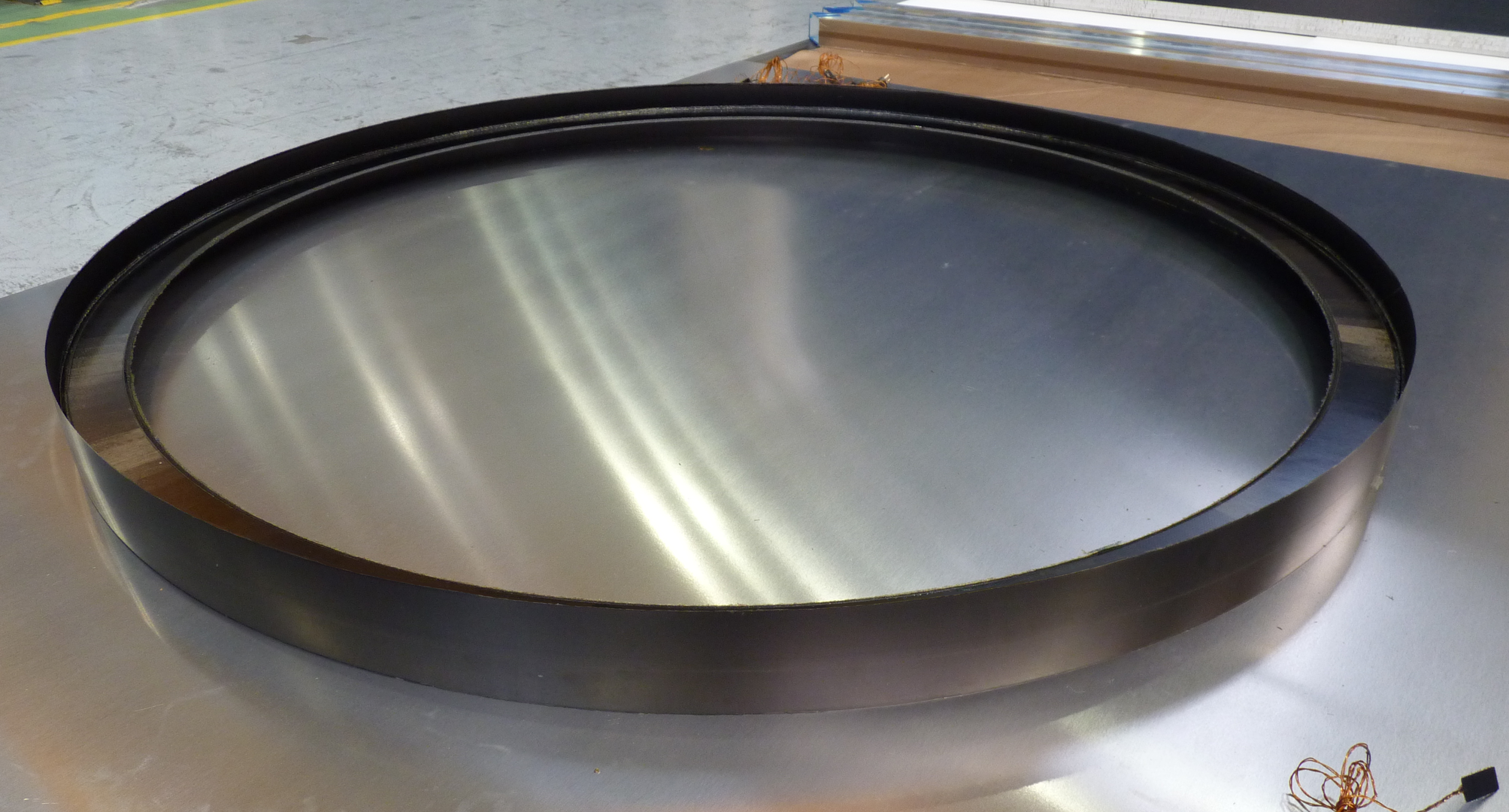Global S&T Development Trend Analysis Platform of Resources and Environment
| ESA's next Sun mission will be shadow-casting pair | |
| admin | |
| 2020-02-10 | |
| 发布年 | 2020 |
| 语种 | 英语 |
| 国家 | 欧洲 |
| 领域 | 地球科学 |
| 正文(英文) | After Solar Orbiter, ESA’s next mission observing the Sun will not be one spacecraft but two: the double satellites making up Proba-3 will fly in formation to cast an artificial solar eclipse, opening up the clearest view yet of the Sun’s faint atmosphere – probing the mysteries of its million degree heat and magnetic eruptions. Aiming for launch in mid-2022, Proba-3 comprises two small metre-scale satellites to be placed together in Earth orbit. They will line up to cast a precise shadow across space to block out the solar disc for six hours at a time during each 20 hour orbit, giving researchers a sustained view of the Sun’s immediate vicinity. 
Precision formation flying “To achieve this the satellite pair must achieve an unprecedented precision of flight control,” explains Proba-3 system manager Damien Galano. “They must align along an average distance of 144 m apart, maintained to an accuracy of a few millimetres. By achieving such precision formation flying techniques, in future multiple small satellites could perform equivalent tasks to individual giant spacecraft.” Proba-3’s focus will be the Sun’s faint atmosphere, or corona, which extends millions of kilometres from the solar surface and is the source of the solar wind and coronal mass ejections – huge magnetic eruptions that can affect space weather all the way to Earth itself. The corona is also the basis of a long-standing scientific mystery: while the Sun’s surface is a comparatively cool 6000 °C, the corona rises to a sizzling million degrees or more – in apparent defiance to the laws of thermodynamics. 
But the dazzling face of the Sun usually masks the faint, wispy corona, like a blazing bonfire next to a firefly. Revealing the solar corona “Up until now, the best way to see the corona is briefly during a solar eclipse on Earth, or else using a ‘coronagraph’ instrument incorporating one or more blocking – or ‘occulting’ – discs to blot out the Sun’s disc,” says solar scientist Andrei Zhukov of the Royal Observatory of Belgium (ROB). 
He is the principal investigator of Proba-3’s main ASPIICS (Association of Spacecraft for Polarimetric and Imaging Investigation of the Corona of the Sun) telescope, while also serving as ROB’s project scientist of Solar Orbiter’s Extreme Ultraviolet Imager (EUI). “But sunlight still bends around such blocking discs– known as ‘diffraction’ – which can leads to a high level of straylight within an instrument, degrading the resulting image,” adds Andrei. “The idea behind Proba-3 is to cut that straylight fivefold and in the same time observe very close to the edge of the Sun, by flying the external blocking disc far away from the rest of the telescope, aboard a separate satellite. “I’m looking forward to the time when Proba-3 is operating along with other Sun-watching missions. While Solar Orbiter’s EUI observes changes on the solar surface in extreme ultraviolet, Proba-3 will clearly show associated features within the inner corona in visible light, revealing interactions between the Sun and its surroundings.” 

Proba-3: Dancing with the stars
Access the video Mission taking shape The mission has passed its ‘critical design review’, leading to the manufacturing and testing of satellite hardware. “The prototype of the 1.4-m diameter external occulting disc has undergone testing,” explains Delphine Jollet, platform system engineer. 
“Its rim, made of temperature-resistant carbon fibre reinforced polymer (CFRP), has to meet very stringent requirements to precisely hold its torus shape, designed to minimise the straylight spilling over its edges into ASPIICS. Skilled workmanship is essential to prepare the CFRP layout for moulding.” 
“A secondary internal occulting disc is mounted within the instrument, this one just 3.5 mm in diameter, but having similarly stringent dimensional standards,” notes Proba-3 payload engineer Jorg Versluys. “This internal occulter is part of the qualification model of the ASPIICS instrument that is being tested in simulated space conditions.” |
| URL | 查看原文 |
| 来源平台 | European Space Agency |
| 文献类型 | 新闻 |
| 条目标识符 | http://119.78.100.173/C666/handle/2XK7JSWQ/227693 |
| 专题 | 地球科学 |
| 推荐引用方式 GB/T 7714 | admin. ESA's next Sun mission will be shadow-casting pair. 2020. |
| 条目包含的文件 | 条目无相关文件。 | |||||
| 个性服务 |
| 推荐该条目 |
| 保存到收藏夹 |
| 查看访问统计 |
| 导出为Endnote文件 |
| 谷歌学术 |
| 谷歌学术中相似的文章 |
| [admin]的文章 |
| 百度学术 |
| 百度学术中相似的文章 |
| [admin]的文章 |
| 必应学术 |
| 必应学术中相似的文章 |
| [admin]的文章 |
| 相关权益政策 |
| 暂无数据 |
| 收藏/分享 |
除非特别说明,本系统中所有内容都受版权保护,并保留所有权利。
修改评论